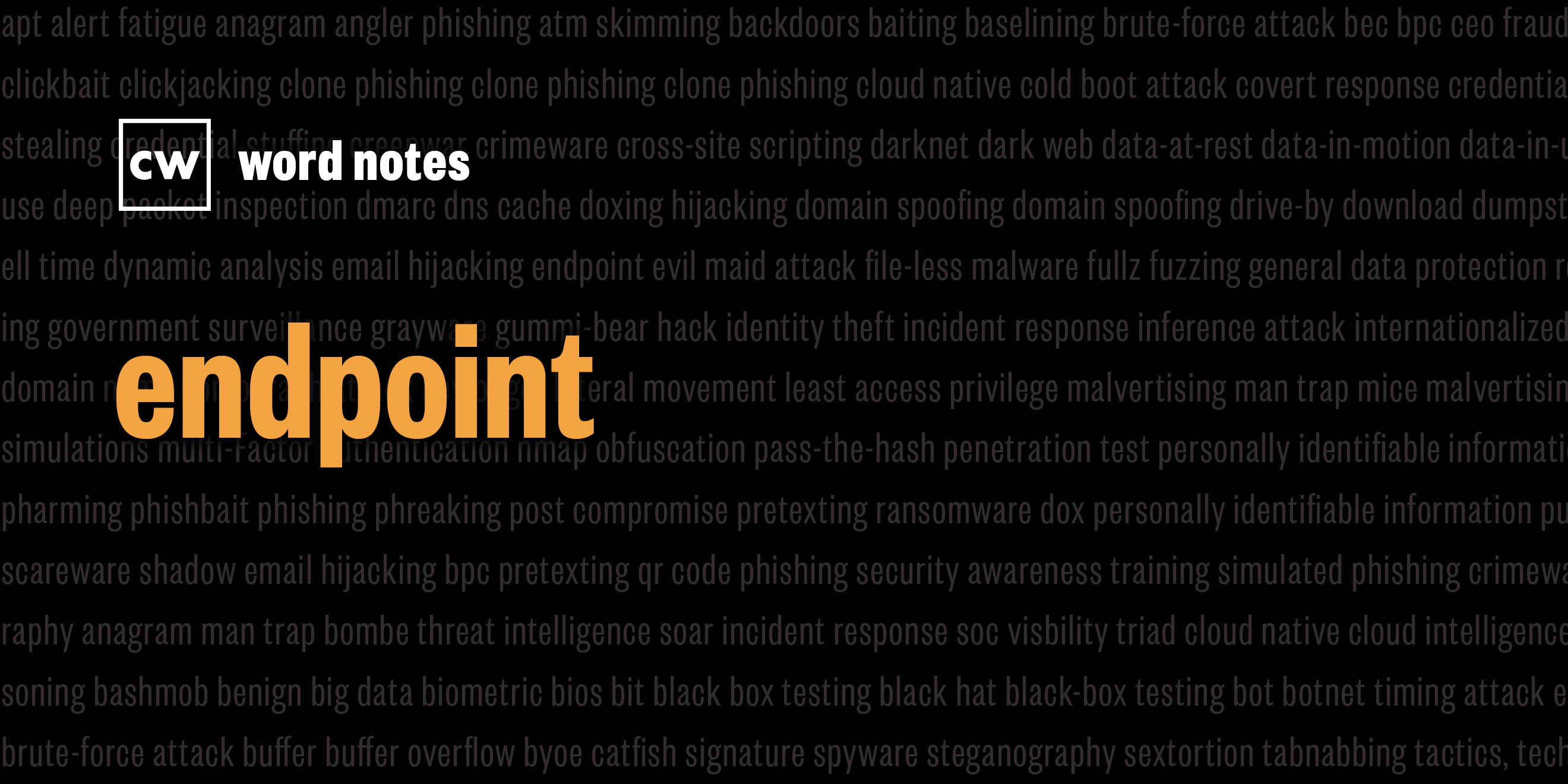
endpoint (noun)
Rick Howard: The word is: endpoint.
Rick Howard: Spelled: E is in email, N as in new, D as in device, P as in ping, O is in overflow, I as in infinite, N as in No-op and T as in Thomas.
Rick Howard: Definition 1: A hardcore punk band out of Louisville. Definition 2: a recursive definition: A device connected to a network that accepts communications from other endpoints like laptops, mobile devices, IoT equipment, routers, switches, and any tool on the security stack.
Rick Howard: Example sentence: Most organizations have a large number of endpoints connected in their network.
Rick Howard: Origin and context: In the early days of computing, the first "endpoints" were big mainframes. By the 1970s, researchers began experimenting with self-replicating code distributed to those endpoints via their common networks, like the Creeper Worm written by Bob Thomas in 1971. By the 1980s, personal computers had entered the market, and in 1986, the Brain Boot Sector Virus started to propagate. According to Daniel Snyder at InfoCarnivore, Brain Boot "came with contact information for the authors who created it." It was a simpler time. By the late 1980s, the first antivirus programs started appearing as freeware or shareware tools. Between 1987 and 1989, researchers used a bulletin board chat group called "Virus-L" to exchange information, tools, and shareware for the purpose of removing virus infections. By the early 1990s personal computers, the new endpoints, became common office tools and commercial antivirus vendors catered both to the home user and business IT shops. But it was clear at this point that endpoints must be protected in cyberspace.
Rick Howard: Cybersecurity Nerd Lore: One of the "Virus-L" bulletin board chat group members was John McAfee. In 1989, McAfee started his own endpoint protection company, McAfee Associates and in a few short years became one of the most famous, and eventually infamous, cybersecurity personalities ever. In 1992, he launched a marketing campaign that warned the world of the Michelangelo Virus that he claimed could already be infecting up to five million PCs worldwide. He predicted that on 6 March of that year, it would destroy the data on all those infected hard drives. Sales boomed. According to Andrew Clouts at the website DigitalTrends, by that March, at least half the Fortune 500 companies had deployed the McAfee Associates antivirus product. But on 7 March, nothing happened. Security pundits accused Mr. McAfee of fabricating the entire thing. In 1994, Mr McAfee's reputation was so bad that the board forced him out of his company with a whopping one hundred million dollar severance package. After that, he dabbled in a few other businesses, became a yoga guru and enthusiastically embraced the sport of aerotrekking, an insane sport which, according to Clouts, involves soaring through the air on a half-motorcycle, half-hang glider contraption called a kite plane. After an accident where two people died, Mr. McAfee fled the Belize to escape a lawsuit. And that's where the real craziness kicked in with alleged paranoia, a harem of allegedly underaged women, alleged drugs, alleged mercenaries, and potentially alleged murder, allegedly. Oh, also libertarian politics and YouTube videos slagging his former company.

